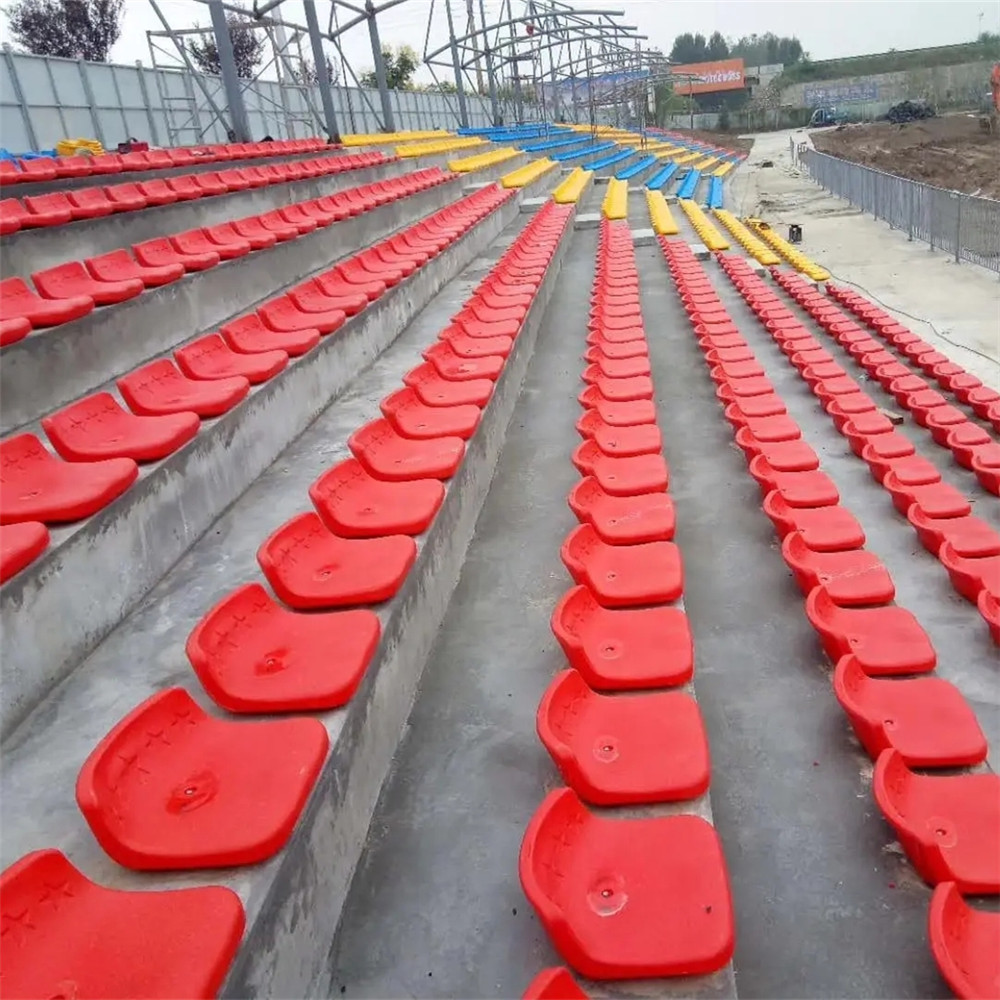The difference between stands, bleachers and grandstand seats
Analysis of the differences between stands, bleachers and bleacher seats
In stadiums, theaters, open-air venues and other places, stands, bleachers and bleacher seats are indispensable equipment for spectators to watch games or performances. They each have different definitions, characteristics and usage scenarios. The following will analyze the differences between the three in detail.

1. Stands
Definition: A stand is a platform built next to or around the venue for spectators to watch games or performances, mostly referring to the audience seats on the sports field. It is usually higher than the stage or competition venue and is arranged around the stage or venue to facilitate the audience to watch the performance or game more three-dimensionally.
Features: The design of the stand focuses on the overall layout and audience experience, and generally has a stepped structure to provide viewing positions at different heights. The stands may include fixed seats and movable seats to accommodate events of different sizes and types.
Use scenarios: Widely used in large-scale events such as sports events, concerts, theater performances, etc., to provide spectators with a centralized viewing area for games or movies.
2. Bleachers
Definition: Bleachers are open spaces located on the top or middle floors of a building, without a roof, and are usually directly connected to the outdoor environment. It provides a wide view and a multifunctional activity space.
Features: The design of bleachers focuses on harmonious coexistence with the natural environment, and is open and flexible. It can be used to arrange open-air restaurants, stargazing platforms, fitness spaces, etc., providing users with a diverse leisure experience.
Use scenarios: Commonly found in various open-air venues, such as parks, squares, and the top floors of buildings, they are used to hold open-air concerts, movie viewing activities, casual gatherings, etc.
3. Bleacher seats
Definition: Bleacher seats are chairs specially used for auditoriums in stadiums, song and dance theaters, etc. It can be divided into injection molding seats, blow molding seats, mobile seats, etc. according to the model and material of the product.
Features: The design of bleacher seats focuses on comfort and durability. The height, width, and tilt angle of the seats are carefully designed to ensure that audiences of different heights can find a suitable position for themselves. High-quality bleacher seats also provide additional head and back support to enhance the comfort of watching games or performances for a long time.
Usage scenarios: widely used in sports competitions, concerts, theaters and other places to provide comfortable sitting support for the audience.
Difference analysis
Stands and open-air stands:
Functional positioning: stands are facilities specifically used for watching games or performances, while open-air stands are part of the building, which are open and multifunctional, not limited to watching games or movies.
Layout design: stands are usually arranged around the stage or competition venue, while open-air stands may be located in different parts of the building, providing different views and activity spaces.
Usage scenarios: stands are mainly used for indoor or specific venues for watching games, while open-air stands are more suitable for open-air venues and diversified leisure activities.
Stands and stand seats:
Overall and partial: stands are the overall structure of the auditorium, including seats, passages, guardrails and other components; while stand seats are specific seating equipment that constitutes the stands.
Design focus: The design of stands focuses on the overall layout and audience flow, while stand seats focus more on the comfort and durability of individual seats.
Bleachers and bleacher seats: Spatial attributes: Bleachers are part of an open space and may contain a variety of activity areas and equipment; while bleacher seats are seating equipment specifically used for spectator seats and have specific functional attributes.
Flexibility of use: Bleachers are more flexible in design and use, and different activity areas can be arranged as needed; while bleacher seats are more focused on providing a comfortable viewing experience.
padel court,Gymnastic mats, basketball racks, volleyball posts, tennis dwellings, badminton posts, adult gymnastic equipment, parallel bars, horizontal bars, uneven bars, gymnastic rings, balance beams, saddles, hydraulic referee tables, table tennis tables, outdoor fitness equipment, garden fitness equipment
Website:
http://hransports.com/article/238.html